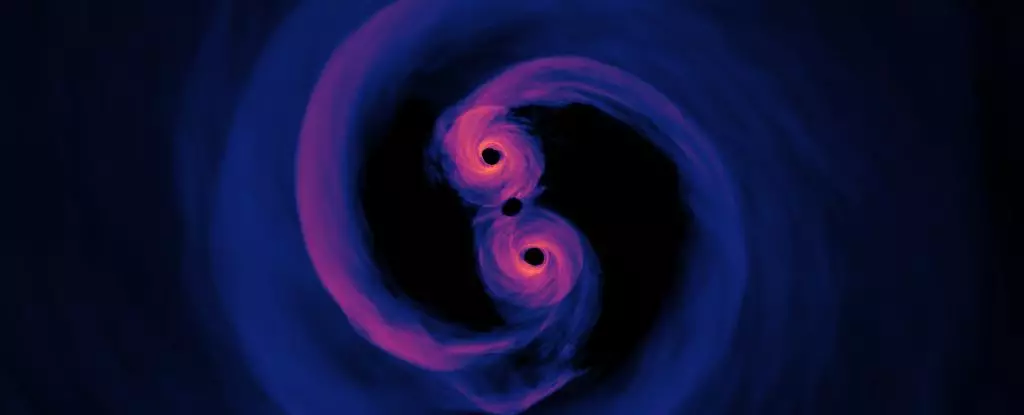Supermassive black holes, found at the centers of galaxies, have long puzzled astronomers. These colossal entities, millions to billions of times the mass of the Sun, are thought to form through mergers with other massive black holes. However, the process by which supermassive black holes collide remains unclear. As they orbit each other, their interaction with the surrounding stars and gas causes their separation to decrease. When they reach a distance of about one parsec, their orbit stabilizes, leading to a long period of apparent standstill. This phenomenon, known as the final parsec problem, raises questions about the ultimate fate of these supermassive black holes.
One way to determine whether supermassive black holes have merged in the past is through the detection of gravitational waves, which are produced when massive objects alter their speed. Scientists have been searching for the telltale signs of these waves to confirm the occurrence of supermassive black hole collisions. However, a missing piece of the puzzle seems to be preventing a complete understanding of this process. This is where dark matter comes into play.
Dark matter, a mysterious substance that exerts gravitational influence without interacting significantly with normal matter, has long been a subject of scientific intrigue. While dark matter does not participate in traditional interactions, recent mathematical models suggest that it may play a crucial role in resolving the final parsec problem of supermassive black hole collisions. By proposing the existence of self-interacting dark matter particles that remain clustered around black holes, researchers have found a potential solution to the conundrum.
The idea that dark matter particles can interact with each other and provide the necessary gravitational support for supermassive black holes to merge opens up new avenues for exploration in astrophysics. Researchers like Gonzalo Alonso-Álvarez are paving the way for a deeper understanding of the nature of dark matter and its implications for the dynamics of the Universe. By incorporating dark matter into the models of supermassive black hole collisions, scientists are able to make predictions that can be tested through observations.
The findings regarding the role of dark matter in facilitating the coalescence of supermassive black holes represent a significant advancement in the field of astrophysics. Not only do these insights shed light on the mechanisms that drive the evolution of galaxies, but they also offer a new perspective on the elusive nature of dark matter itself. As technology advances and observational capabilities improve, researchers will continue to explore the connections between dark matter, supermassive black holes, and the fundamental structure of the Universe. The quest for knowledge about the cosmos and its mysteries remains ongoing, with each discovery paving the way for further exploration and understanding.


Leave a Reply